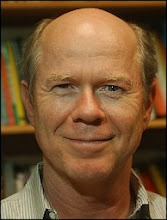Neurofeedback and epilepsy
I found three recent articles on the use of neurofeedback and seizure disorder. Neuropathways EEG unit patented by Margaret Ayers has shown excellent results with reducing or eliminating seizures. I have been using this unit for 5 years.
Clinical Electroencephalography, 2000 Jan;31(1):45-55, Sterman, MB, Department of Neurobiology, School of Medicine, UCLA.
This is an extensive neurophysiological literature review that documents both immediate and sustained functional changes that are consistent with elevation of seizure thresholds using neurofeedback. An assessment of over 25 years of peer-reviewed research demonstrates impressive EEG and clinical results were achieved with the most difficult subset of seizure patients.
Expert Review of Neurotherapeutics, February 2006, Vol. 6, No. 2, Pages 247-257, Egner T & Sterman MB, Functional MRI Research Center, Columbia University, Neurological Institute.
The treatment of epilepsy through operant conditioning of the sensorimotor rhythm electroencephalogram has a 35-year history. The clinical benefits derived from this neurofeedback training protocol, particularly in patients that are nonresponsive to pharmacotherapy, have been documented in many independent laboratories. Recent advances in computer technology have resulted in the availability of relatively inexpensive high-quality equipment for the application of neurofeedback therapy, thus presenting a viable and promising treatment alternative to the interested clinician.
Child Adolesc Psychiatr Clin N Am. 2005 Jan;14(1):163-76, viii., Walker JE & Kozlowske GP, Neurotherapy Center of Dallas.
With electroencephalographic (EEG) biofeedback (or neurofeedback), it is possible to train the brain to de-emphasize rhythms that lead to generation and propagation of seizure and emphasize rhythms that make seizures less likely to occur. With recent improvements in quantitative EEG measurement and improved neurofeedback protocols, it has become possible in clinical practice to eliminate seizures or reduce the amount of medication required to control them. In this article, the history of neurofeedback for epilepsy is presented followed by discussions of the relevant neurophysiology of epilepsy. A model of how neurofeedback might raise the seizure threshold is then presented. Clinical experience using a quantitative EEG-guided approach is described, including a representative case study.


0 Comments:
Post a Comment
<< Home